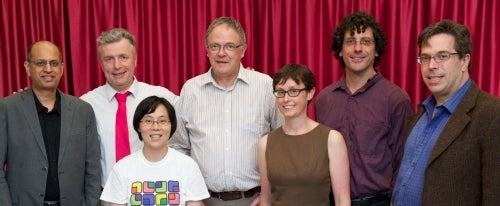
The 32 invited lectures covered the latest advances in several areas of algebraic combinatorics and its applications. Among the speakers were various experts in finite group theory (Babai, Cameron, Praeger) who applied the classification (among other tools) to the study of constant weight codes, synchronizing automata and fast algorithms for graph isomorphism etc. New results on Cayley graphs (Morris, Morris, Rooney) and group actions on graphs (Conder, Imrich) furthered the connection between algebra and combinatorics. The other main branch of algebraic graph theory deals with graph eigenvectors and the information one can gain about a graph from its spectrum (Cioaba, Van Dam, Haemers, Koolen). Among the applications of this theory are molecular stability (Mohar) and Erdos-Ko-Rado theorems (Meagher). Several other talks surveyed the latest developments in extremal set theory (Babai, Chowdhury) as well as the application of semidefinite programming techniques in combinatorial optimization problems (Dukes, Roberson, Severini). Computational complexity became a recurring theme as theoretical discussions shed light on applications in the realm of algorithms (Babai, Rooney).
A major theme of the meeting was the application of combinatorics and linear algebra to quantum information theory and quantum algorithms. Ten of 32 lectures touched on various connections of this sort, ranging from quantum walks (Childs, Coutinho, Godsil, Guo, Tamon), complex Hadamard matrices (Munemasa), mutually unbiased bases and symmetric informationally complete positive operator-valued measures (Huang), quantum algorithms Roetteler, Severini) and configuration issues for practical quantum computing platforms (Roy).
The variety of talks was rich and participants also learned about asymptotic enumeration (McKay), chromatic polynomials and their connection to statistical physics (Royle), combinatorial and euclidean designs (Bannai), normal forms of adjacency matrices (Xiang) and additive combinatorics (DeVos).
The conference program, in its balance of combinatorial and algebraic themes with such a variety of applications, served not only as a conduit for collaboration among established researchers, but also as a concise survey of a broad array of research challenges for students and new PhDs.
Related links: